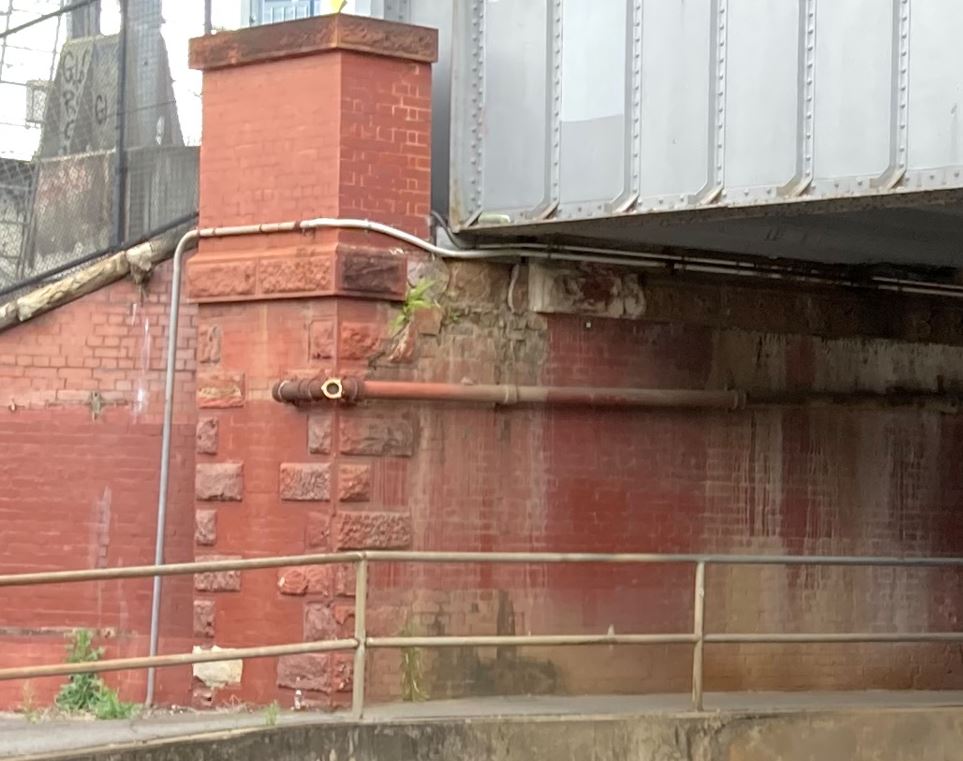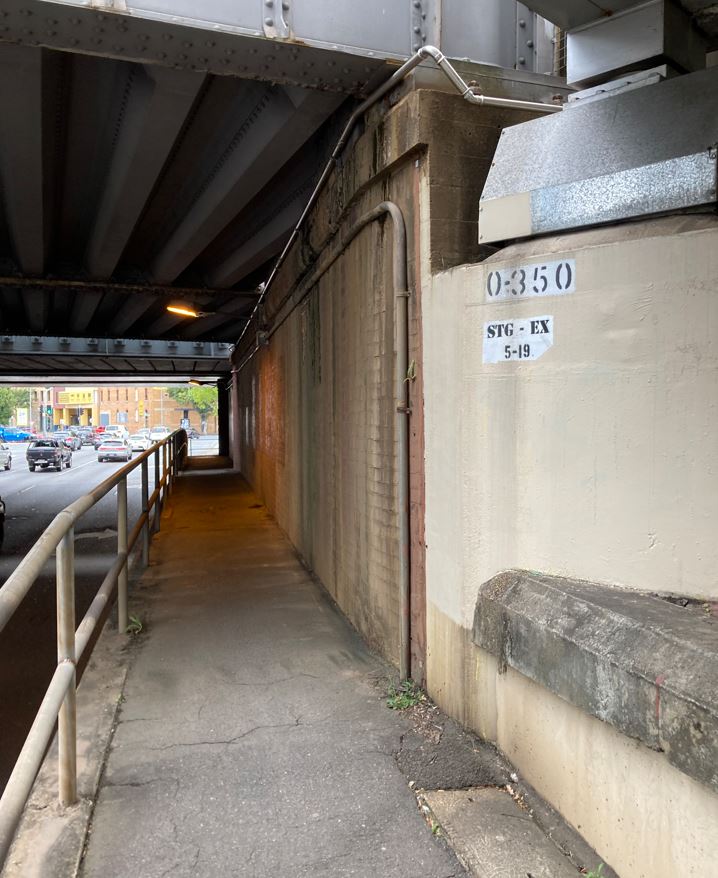Addresses
Type of place
Bridge
Period
Federation 1890-1914
Addresses
Type of place
Bridge
Period
Federation 1890-1914
These brick and porphyry abutments were built circa 1885 and circa 1895 as part of two rail bridges spanning Countess Street. The bridges were replaced in the twentieth century to accommodate heavier train engines, however these abutments were retained and have remained an integral part of Brisbane’s rail network since the nineteenth century.
Geolocation
-27.465134 153.015911
Key dates
Local Heritage Place Since —
Date of Citation —
Construction
Structure: PorphyryCriterion for listing
(A) Historical; (B) RarityInteractive mapping
Geolocation
-27.465134 153.015911
Key dates
Local Heritage Place Since —
Date of Citation —
Construction
Structure: PorphyryCriterion for listing
(A) Historical; (B) RarityInteractive mapping
History
The first railway line to be completed in Queensland ran from Ipswich to Grandchester and was opened on 31 July 1865. The line was extended to Dalby in 1868 and then to Warwick in 1871. There was no rail line to Brisbane at this time.
As the population and significance of Brisbane grew so too did calls for a rail line between Ipswich and Brisbane. In 1871, a colonial Royal Commission investigated the feasibility of a rail connection and recommended that it proceed. The line was completed in July 1876 and the Brisbane terminus was located at Roma Street. The railway station was named ‘Brisbane’ until 1889 when Central Railway Station was opened. Thereafter it was known as Roma Street Station.
The line crossed above Countess Street and was originally supported by a wooden bridge with two tracks that was designed, in 1880, by Frederick Giles Brown, assistant engineer to Chief Engineer’s Branch of Queensland Railways. The original bridge was unpopular, as it was so low-slung that it hindered road traffic such that “a load of hay cannot be taken” through it.1 Planning for a new Countess Street rail bridge had begun in 1880. But as rail patronage quickly increased, this, however, necessitated the duplication of the Ipswich rail line and the new bridge was incorporated into this duplication plan. Survey work for the duplication process began in 1884 and construction of new lines and bridges was completed in 1885. The first Countess Street rail bridge was replaced by a steel-girder bridge set upon brick abutments at this time. The new bridge was larger and higher and contained four tracks instead of the original two. It was described as likely to be “the neatest bridge in Brisbane” and “a handsome and substantial structure”.1
The movement of freight via rail also increased. Another rail bridge was constructed over Countess Street circa 1895, enabling access for freight trains to an expanded goods yard at the Roma Street rail station. This bridge is located to the south of the second Countess Street bridge and rests on brick abutments that are identical to the circa 1885 bridge.
Both bridges have been rebuilt since their original construction to accommodate heavier train engines. In 1959, as a result of the quadruplication of rail tracks between Corinda and Zillmere, another bridge was constructed to the north of the existing abutments. Though the rail lines and other components of the Countess Street rail bridges have changed over the years, the two southern abutments have remained largely unaltered.
Description
These abutments are comprised of brick with porphyry stone quoins and caps. The abutments are currently painted in a red colour. There is an elevated walkway extending the length of the abutments on either side of the roadway and the abutments span the full width of the rail lines.
Statement of significance
Relevant assessment criteria
This is a place of local heritage significance and meets one or more of the local heritage criteria under the Heritage planning scheme policy of the Brisbane City Plan 2014. It is significant because:
References
-
The Brisbane Courier, 18 January 1880
-
The Brisbane Courier, 18 January 1880
-
Brisbane City Council, 1946 aerial photographs.
-
Brisbane City Council, Sewerage Map, 5 January 1915
-
Buchanan Architects, ‘Brisbane to Toowoomba’: A Report for QR, Buchanan Architects, 2002
-
Cole, John R. Shaping a City: Greater Brisbane 1925-1985. Brisbane: William Brooks Queensland. 1984
-
John Oxley Library, photographic collection.
-
Kerr, John, Brunswick Street, Bowen Hills and Beyond – the railways of the northern suburbs of Brisbane, (Brisbane: Australian Railway Historical Society, 1988)
-
Kerr, John & Armstrong, John, Brisbane Railway Centenary, Brisbane, Australian Railway Historical Society, 1976
-
www.Archivessearch.qld.gov.au/SeriesList.asp?agency_id=QA00633
Citation prepared by — Brisbane City Council (page revised October 2022)


